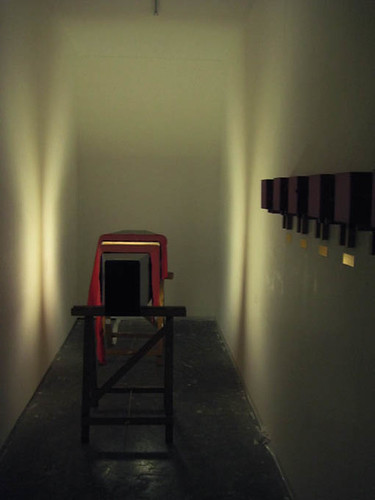For some absurd reason, i’m reading Michel Foucault‘s Spectacle of the Scaffold.
Morbidity by the French philosopher seemed a fitting chaser to the sexual introspection and feminist meanderings of Erica Jong‘s Fear of Flying. Suffice to say, i’m having some weird dreams at the moment.
Anyway, Foucault speaks about the public changes of death-as-punishment and they appear to coincide with political changes of modern democracy. It seems that one man, one vote, also inspired the idea of one man, one death – that the punishment of torture by a thousand deaths (first drawn and quartered, flayed, then dragged along behind a horse and cart before being burnt at the stake and ashes scattered to the wind, etc) was barbaric (!) and not fitting a system that sought equality and civilisation. He describes the history of penal changes in which punishment is gradually separated from a corporal act into that of the soul (or at least the mind) – a concept which is well-known by the legal peeps, but i found it disturbingly fascinating.
All of this has got me thinking again about death.
Death as the ultimate silence – a true absence of sound.
Death as a political consideration – one necessarily built into the public system of governance, law and order and infrastructure. In terms of death-as-punishment, it is the absolute removal of a citizen’s place in society: the removal of one voice. And such a lack of voice is in fact the only silence in the public realm. It is primarily an undesirable one. Not this utopian, desired, i-just-need-some-peace-and-quiet silence, but the true absence of sound.
Death as an act to be performed– that the performance associated with capital punishment – in all its forms across the centuries – have been a performance of creating death and silence.
Architecture of death – the gallows, the guillotine, the dungeon and the death row prison ward – all architectural types for the creation of silence. Foucault speaks of the ever-lengthening distance between The Executioner and the prisoner – no longer does he even touch the body, but now presses a button. Has the designer who is charged with the task of designing these spaces begun to take on these roles?
These are just a few loose ideas, but something which has been an unexpected aside to my research into sound/listening/silence in public.
I know you think it’s too morbid a subject for a Sunday morning, but how’s this for timing:
– Yesterday was the Melbourne Zombie Shuffle
– Daniel Mudie Cunningham resurrected his Funeral Songs blog and
– Elvis Richardson and Claire Lambe have opened a new space called Death be Kind which opens on 29 June with The Memorial.
